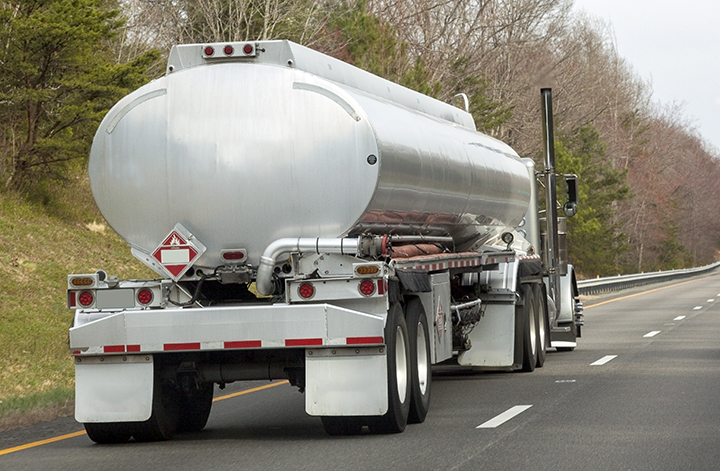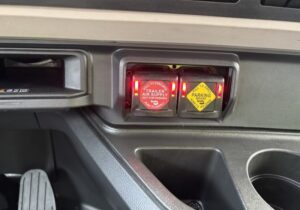WASHINGTON — Motor carriers hauling tank trailers can now install a red or amber brake-activated pulsating light on the rear of the trailers, according to a recent decision by the Federal Motor Carrier Safety Administration (FMCSA). The pulsating light must be positioned in the upper center position or an upper dual outboard position, and be used in addition to the steady-burning brake lights required by Federal Motor Carrier Safety Regulations (FMCSRs).
According to an Oct. 8 notice in the Federal Register, FMCSA has granted a limited five-year exemption in response to a September 2019 application by National Tank Truck Carriers Inc. (NTTC), noting, “The agency has determined that granting the exemption would likely achieve a level of safety equivalent to or greater than the level of safety provided by the regulation.” The limited exemption will expire Oct. 8, 2025.
NTTC is an association that includes more than 200 tank truck companies responsible for transporting more than 80% of the volume in the tank-hauling industry. According to the Federal Register notice, most of NTTC’s members are regional, family-owned businesses that specialize in bulk transportation of hazardous products, such as petroleum products, chemicals, gases, and hazardous wastes. These companies also haul nonhazardous materials such as bulk foods and dry bulk products such as cement or plastic pellets.
In its application for an exemption from 49 CFR 393.25(e), NTTC contended the pulsating brake-activated light, used in conjunction with the required steady-burning light, will improve visibility and help prevent accidents.
“Rear-end crashes generally account for approximately 30% of all crashes. These types of crashes often result from a failure to respond (or delays in responding) to a stopped or decelerating lead vehicle. Data collected between 2010 and 2016 show that large trucks are consistently three times more likely than other vehicles to be struck in the rear in two-vehicle fatal crashes,” NTTC noted.
NTTC cited a similar exemption granted by FMCSA to Groendyke Transport Inc., based on real-world demonstrations of the pulsing lights’ effectiveness in reducing the frequency of rear-end collisions. NTTC also cited studies conducted by the National Highway Traffic Safety Administration (NHTSA) on the issues of rear-end crashes, distracted driving and braking signals.
In granting the current exemption, FMCSA noted that while flashing, rotating or pulsating red lights are usually only allowed on emergency vehicles, these vehicles use high-intensity lights that are visible on all sides of the vehicle, while the pulsating brake lights requested by NTTC are visible only from the rear of the vehicle, and only when the vehicle’s brakes have been activated. In addition, FMCSA said, the requested lights are similar in intensity and flash rate to rear-hazard lights currently allowed by FMCSRs.
“This exemption is a simple, common sense way to reduce accidents in our industry. When Groendyke installed these lights on their trailers and petitioned FMCSA, all rear-end collisions dropped by 33.7%,” NTTC noted in a prepared statement on Oct. 8, 2020. “With the exemption expanded, this simple and highly effective safety practice is available to the entire tank truck industry with the full approval of FMCSA. For that, NTTC extends its thanks to Deputy Administrator (Wiley) Deck and the rest of FMCSA for its consideration of and action on this issue.”
The Trucker News Staff produces engaging content for not only TheTrucker.com, but also The Trucker Newspaper, which has been serving the trucking industry for more than 30 years. With a focus on drivers, the Trucker News Staff aims to provide relevant, objective content pertaining to the trucking segment of the transportation industry. The Trucker News Staff is based in Little Rock, Arkansas.
















Happy to see this allowed… Why is it only applied to tankers? …..what about flatbed … what about box and reefer trailers?
I agree with L. Mills. I saw one in New Orleans on I-10. Even in the rain it was plainly visible. This should be a requirement for box and reefer trailers.